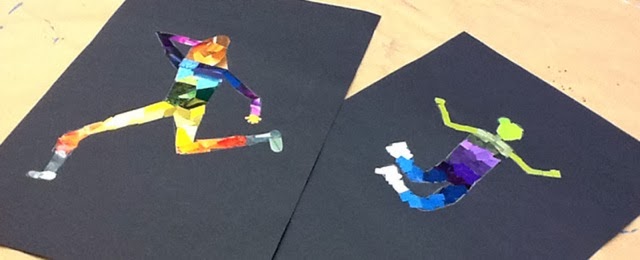and tying it in with beginning of the year basics.
I always teach about what symbols mean, what the word "peace" means,
and how the peace sign came to be.
I was actually published in
Teach Boldly where I wrote a portion of a chapter
about my first experience teaching this unit.
This year after showing a slide show on the peace sign, other peace symbols such as the dove and olive branch- and introducing works of Pablo Picasso and Rene Magritte-- I went back to basics with my new fifth graders. We reviewed color mixing with model magic.
Then each student made their own peace sign, also including texture if they chose to do so.
Each student was responsible for creating an accompanying tag with their name and a sentence about how they define peace of what it means to them using thin marker and colored pencil.
I hung them in the window, they looked awesome!
We are currently working on another related lesson that focuses on composition and overlapping.
----------------
Past lessons I have done include these below:
Rainbow colors of marker lines turned into paint- and then collaged onto the peace sign.
Hands put together to form a large peace sign.
One grade I had draw examples of peaceful and
respectful behaviors to set examples for the other students.























































